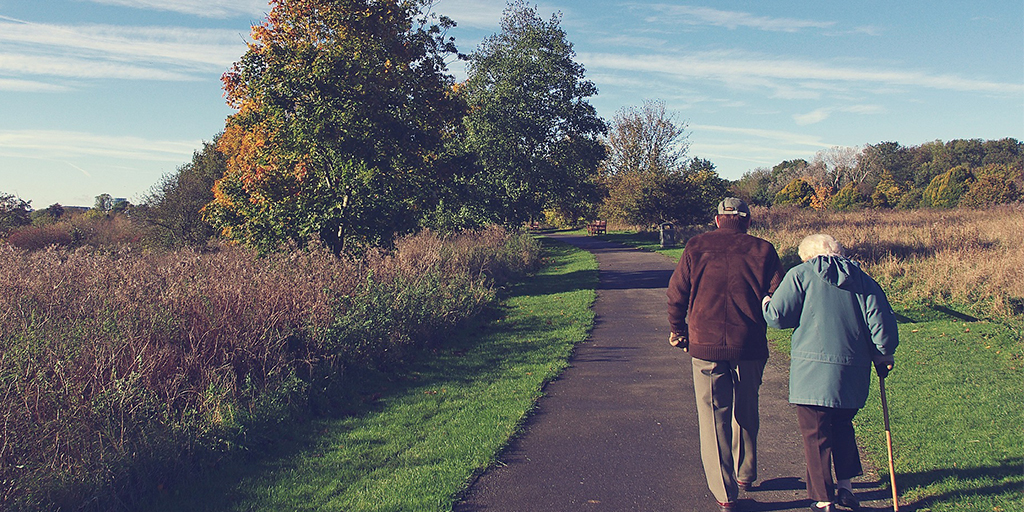April 23, 2021, by School of Medicine
50 at 50: Transforming health care of older people
 I’ve been in Nottingham for 30 years, and was in touching distance of those who were there at the start of Nottingham medical school. I find it astonishing to reflect on the transformation I witnessed or heard about first hand.
I’ve been in Nottingham for 30 years, and was in touching distance of those who were there at the start of Nottingham medical school. I find it astonishing to reflect on the transformation I witnessed or heard about first hand.
I am told that one of the reason for the medical school was the awful health statistics in Nottingham, perhaps in part due the generous habit of local cigarette companies giving their employees hundreds of cigarettes a week. The original missions of the Department of Health Care of the Elderly (DHCE) were to teach students (many of whom would become local practitioners) and also to staff and deliver services. Geriatric medicine had been “invented” in the UK in the late 1940s with the emergence of the NHS and the tackling of the long term institutions it inherited. It proposed the apparently ground-breaking idea that older people could improve if they had a bit of medical treatment and rehabilitation. Despite some pushback from the medical establishment along the lines that “there is no such thing as geriatrics”, the late Tom Arie set up the DHCE producing a revolutionary interdisciplinary model of teaching and care in old age medicine, old age psychiatry and gerontology. Tom had previously almost single-handedly developed the specialty of old age psychiatry in the 1970s, and was later awarded the CBE for his contributions. But the task faced by his department was huge. The first consultant I worked for in Nottingham in the late 1980s (Sunil Mukherjee) recalls having previously had over 200 long term care beds to look after: his ward rounds started on Monday morning and finished on Friday evenings. Older people who were ill were not supposed to come into hospitals. There was the sort of casual ageism (like sexism and racism) that was not recognised or called out – age limits for coronary care units and the explicit denial of services to patients on geriatric wards. I recall as a registrar in the late 1980s being told by a senior radiology consultant that older people do not get portable chest rays as if this was a fundamental and inviolate law of nature.
Whilst hospital beds numbers fell and geriatric wards became rehabilitation wards, and the evidence base for geriatric rehabilitation grew, the next challenge was to ensure that older people had proper access to high quality acute care. In the 1990s, geriatricians were (sometimes graciously and sometimes not) allowed to be involved in the acute medical admission system – before that, they provided a take-away service only. This was associated with a number other factors that enacted a transformation to the kinds of services we see today. Bed numbers fell as long term care wards become rehabilitation wards, but another factor was the explosion of private care homes in the 1980s and 1990s which had barely existed before then. Primary care took on the medical care of these people, not geriatricians despite their grounding in in long term care. The population aged and expectations changed, meaning that more and older patients presented as acute medical emergencies. Rehabilitation became seen as a community or outpatient activity: in the 1980s patients were admitted for rehabilitation but in the 2020s they are discharged for rehabilitation. For all these reasons, geriatric medicine in the UK has largely become the acute medical care of older people – in other countries it survives as care home medicine or geriatric rehabilitation.
But one other transformation was also occurring, which was the development of liaison geriatric services. The first developments of this were “orthogeriatrics” where geriatricians work alongside orthopaedic surgeons in the care of older people with hip fracture. Nowadays we have geriatric psychiatric liaison, surgical liaison, oncology liaison, community liaison, care home liaison, and orthogeriatric liaison has moved beyond hip fracture to other fracture types. Most geriatric services nowadays provide an acute medical service and a range of geriatric liaison services.
The medical school and our clinical colleagues have been major leaders in these transformations over the decades. We set up one of the first orthogeriatric units, developed and evaluated combined medical and mental health care units, pioneered community geriatrics, evaluated home based rehabilitation and intermediate care, developed acute frailty medicine, have pushed the boundaries of orthogeriatrics, and there are plans for an academic care home. We have one of the largest groups of clinical academic geriatricians in the world leading these ideas.
The future is bright too. It’s a subject for another blog, but biological treatments to prevent and reverse the effects of ageing are on the way, partly led by the bioscientists right here in Nottingham. We do not have anti-ageing services right now and talking about them now seems as fanciful as talking about allowing older people into acute medical wards was in the not-so-distant past. But Nottingham is not a place that is stuck in the past and I am sure we will be leading the next transformational developments in anti-ageing services.
By Professor John Gladman, Academic Unit of Inflammation, Injury, and Recovery Sciences
No comments yet, fill out a comment to be the first

Leave a Reply